Overview
In southeastern Minnesota, oak is the mainstay of the forest products industry and one of the highest valued timber species. Equally important, acorns are an essential food for many wildlife species. Over time oak dominated stands on productive, dry-mesic sites convert through natural succession to more shade tolerant and/or faster growing central hardwood tree species without disturbance agents such as fire, wind, or timber harvest.
Challenges with finding effective and affordable methods to consistently regenerate oak stands led forest managers throughout the last several decades to test a variety of harvesting, site preparation, tending, and protection practices.
This retrospective case study is an assessment of the effectiveness of several different oak regeneration treatments after 29 years. We have exceptionally good data for the first two years after initial treatment because this site was the subject of a University of Minnesota M.S. Thesis by Forestry graduate student John G. Duplissis. The thesis “Artificial Regeneration of Northern Red Oak (Quercus rubra L.) in The Driftless Area of Southeastern Minnesota” was published in January of 1994. It is available at the College of Food, Agriculture and Natural Resources Science in Green Hall on the St. Paul Campus. The study was initiated to determine the effect after two growing seasons of chemical and mechanical site preparation treatments on establishment and growth of northern red oak bareroot nursery seedlings, and planted acorns with and without the protection of tree shelters.
The silvicultural strategy was to re-initiate the stand through timber harvesting by emulating severe surface fire or windthrow thereby creating open to large gap habitat conditions favorable for oak seedling establishment.
The silvicultural system used in the prescription is clearcut with reserves and artificial regeneration. Several different treatments prior to and after harvest were utilized to enhance oak regeneration establishment and growth as detailed in the “Silvicultural Prescription” section.
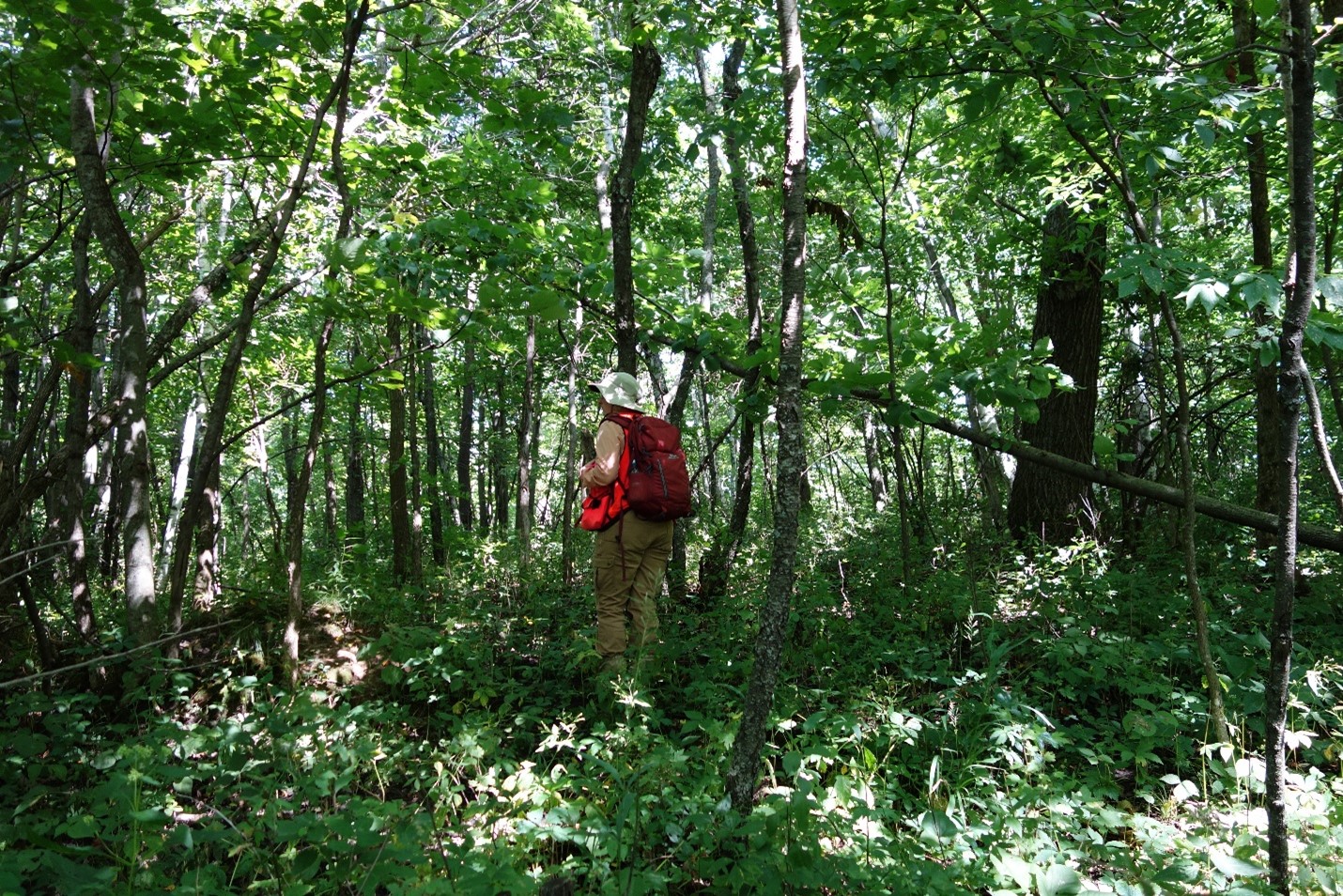
Figure 1: Conducting an inventory in the case study stand in the summer of 2020.
Silviculture Objective(s)
1) Regenerate a mature oak stand to a young stand of similar composition.
2) Evaluate the effectiveness of several different site preparation and tending treatments
3) Maintain and enhance wildlife habitat by increasing the amount of oak trees in the new stand (Sanders, 1977).
4) Improve timber quality and value. Maintaining healthy, well-formed oaks, black cherry and other hardwoods will help ensure high timber value at harvest time.
Pre-treatment stand description and condition
Pre-treatment species composition:
Overstory
The overstory in the study site was dominated by a mixture of red oak, black oak, pin oak, white oak, and bur oak. 53 percent of all trees greater than 1 inch in diameter were oaks. Other overstory species in these stands include elm, basswood and hackberry (Duplissis, 1994).
Table 1: Mean stand basal area (oak and non-oak trees >1” DBH) for each research block prior to the silvicultural treatments.
|
BASAL AREA (Ft2/acre) | ||
RESEARCH BLOCKS |
OAKS |
NON-OAKS |
TOTAL |
TROUT VALLEY EAST |
53.1 |
23.5 |
76.6 |
TROUT VALLEY WEST |
23.1 |
46.6 |
67.9 |
(Duplissis, 1994).
Understory
Red and white oak seedlings were found on 44 percent of the plots measured, accounting for only 5 percent of the total number of woody stems per acre (Table 2). The majority of tree seedling species in these stands were elm, black cherry, and hackberry, accounting for 83 percent of all the advance regeneration. The shrub layer was dominated by hazel, prickly gooseberries, blackberry, prickly ash, and dogwood. The herb layer was dominated by interrupted and Maiden-hair fern, stinging nettle, and sweet cicely.
Table 2: Mean stems per acre of oak and non-oak species seedlings (stems <1” diameter) for each research block prior to silvicultural treatments.
|
MEAN STEMS PER ACRE | ||
RESEARCH BLOCKS |
OAKS |
NON-OAKS |
TOTAL |
TROUT VALLEY EAST |
178 |
4,704 |
4,882 |
TROUT VALLEY WEST |
357 |
6,418 |
6,775 |
(Duplissis, 1994).
Pre-treatment forest health issues:
None noted.
Landowner objectives/situation:
While specific objectives vary from parcel to parcel, lands under the administration of DNR-Forestry are managed in alignment with Section Forest Resource Management Plans (SFRMP) to ensure that state forest management activities meet statewide goals for ecological protection, timber production, wildlife habitat and cultural/recreational values. The DNR assembles teams from the Divisions of Forestry, Fish & Wildlife, and Ecological & Water Resources who work with partners and the public to develop SFRMPs.
The goal for oak forest acreage at the time of project initiation was to maintain as much of the oak cover type as possible through regeneration of mature stands.
Silviculture Prescription
The following series of treatments were implemented:
| Treatment | Date | Description | Acres |
| Pre-timber sale control of undesirable stems < 6” DBH | October 1991 | To kill all non-commercial tree species less than 6 inches DBH, a "hack and squirt" operation was performed using a chainsaw to girdle undesirable trees, and girdle wounds were treated with Tordon RTU herbicide. | |
Clearcut with reserves harvest
| November 1991 to January 1992 | Harvest to open forest floor to full sunlight for oak regeneration.
Reserves: Approximately 10% of mature, high value hardwood northern red oak, black oak, white oak, green ash, and black walnut were reserved for mast production and as seed trees for regenerating the stand. | 11 |
| Hand cut undesirable trees | Late winter 1992 | All remaining residual stems larger than 2 inches DBH, except for the reserve seed trees, were to have been cut down by hand. However, some undesirable species, including boxelder and hackberry, were not destroyed by the site preparation treatments or removed by the harvesting or post-harvesting operations and were left standing. | 11 |
| Planting preparation | Spring 1992 | The pre and post-harvest operations left an enormous amount of logging slash on site. This was due to many unmerchantable and non-commercial trees felled and left to decompose on the forest floor. Therefore, to provide favorable growing space and help aid with tree planting, a 15 x 22.5 meter area was cleared by hand removing or limbing the slash in each site preparation treatment plot. Slash not removed or piled was limbed and knocked down to a height of no more than 2 feet. | 11 |
| Mechanical site preparation | Early August 1991
| The mechanical treatment involved a d-6 bulldozer with a 93-169 flywheel horsepower. As the bulldozer moved through a stand it ran over small trees and shrubs in an attempt to destroy them by bending, breaking, or uprooting. The bulldozer blade was elevated approximately one foot above the ground and was not used to disturb the topsoil. | 4 (estimated) |
| Chemical site preparation | Late August/early September 1991 | The chemical treatment consisted of 2 quarts of Accord, 2 ounces of Oust, and Valent X-77 (a surfactant) in 10 gallons of water per acre using a backpack mistblower. | 4 (estimated)
|
| Plant seedlings and acorns | April 1992 | The site was hand planted with seedlings and acorns according to study design. Two grades of seedlings were used in this project: (1) seedlings having at least six first-order lateral roots (to be referred to hereafter as premium seedlings) and (2) nursery run seedlings. The seedlings with six-plus first-order laterals were graded by specially trained personnel at the nursery. | 11 |
| Treeshelters installed over some seedlings and planted acorns | Spring 1992 | Treeshelters were placed over the top of some planted seedlings per study design. Small treeshelters or “quills” were placed over some of the planted acorns per study design. | 11 |
| Crop tree release | 2014 | Trees of lower timber value such as elm, boxelder and hickory that were competing with healthy crop trees such as oaks, black cherry and black walnut were killed by girdling them and treating the girdle wounds with Tordon RTU herbicide. | 11 |
What actually happened during the treatment
The treatments went largely as planned, except:
1) Some of the undesirable species, including boxelder and hackberry, were not destroyed by the various tending and site preparation treatments.
2) More than 30 percent of the girdled undesirable stems from the 2014 crop tree release are still alive. We are not sure why these stems survived, but it will be worthwhile to investigate for future release work specifications.
Post-treatment assessment
Results 2 years after initial treatment
There was good initial establishment of red oak regeneration, with no significant differences between site preparation treatments
Tables 3 and 4 show that after two growing seasons, the ratio of seedling height growth to seedling diameter growth was highest on the control treatments and lowest on the chemical site preparation treatments. The ratio of height growth to diameter growth was highest for the premium seedlings, followed by the nursery run seedlings, and the planted acorns. Tree shelters improved height growth for both the seedlings and planted acorns. Seedling survival rates varied from 93 to 96 percent while the survival rates for the planted acorns varied from 16 to 22 percent. There were no differences in survival rates between site preparation treatments. (Duplissis, 1994).
Table 3: Mean percent survival of oak planting stock types in 1992 and 1993.
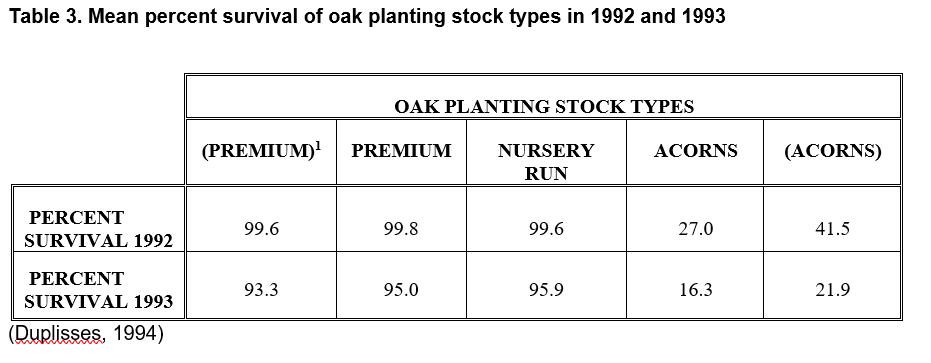
Table 4: Mean height and growth of planted northern red oak seedlings and acorns by research block after 1 and 2 growing seasons.
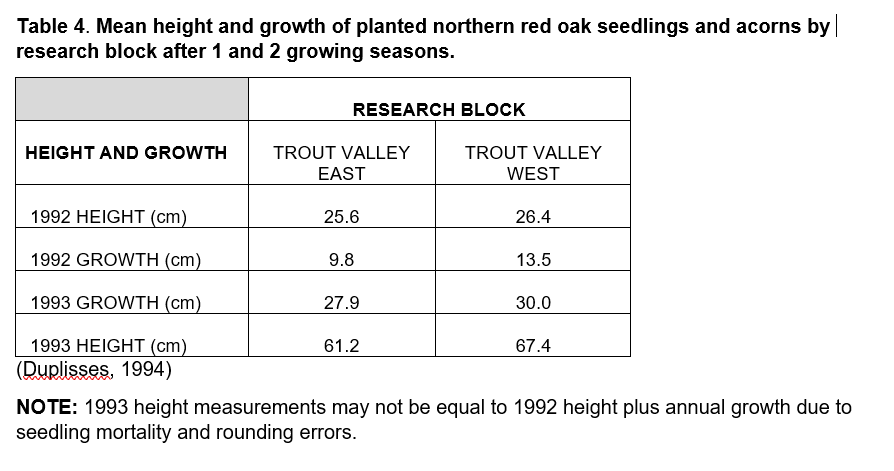
NOTE: 1993 height measurements may not be equal to 1992 height plus annual growth due to seedling mortality and rounding errors.
Results 29 years after initial treatment
We were unable to re-establish locations of the different 1991 research treatment plots, so we can’t draw any new conclusions about how the various treatments may have impacted oak survival after 29 years. We do know from the Duplissis thesis that after 2 years, there was good initial establishment of red oak on all plots, with no significant differences between treatments.
Overstory and Mid-story
Measurements in 2020 indicate a diverse hardwood stand. As shown in Table 5 below, red oak, black cherry, hackberry, paper birch, basswood, and elm have the greatest basal area and frequency. A variety of other species are also scattered throughout the stand in smaller amounts, including black walnut, boxelder, butternut, white oak and several others.
While the oak species present in the current stand are a combination of reserve trees left during harvest and trees that regenerated post-harvest, most of their abundance and volume is from trees that were reserved at harvest time, not trees that regenerated post-harvest.
Table 5: Tree species density by DBH class, and frequency on plots in 2020.
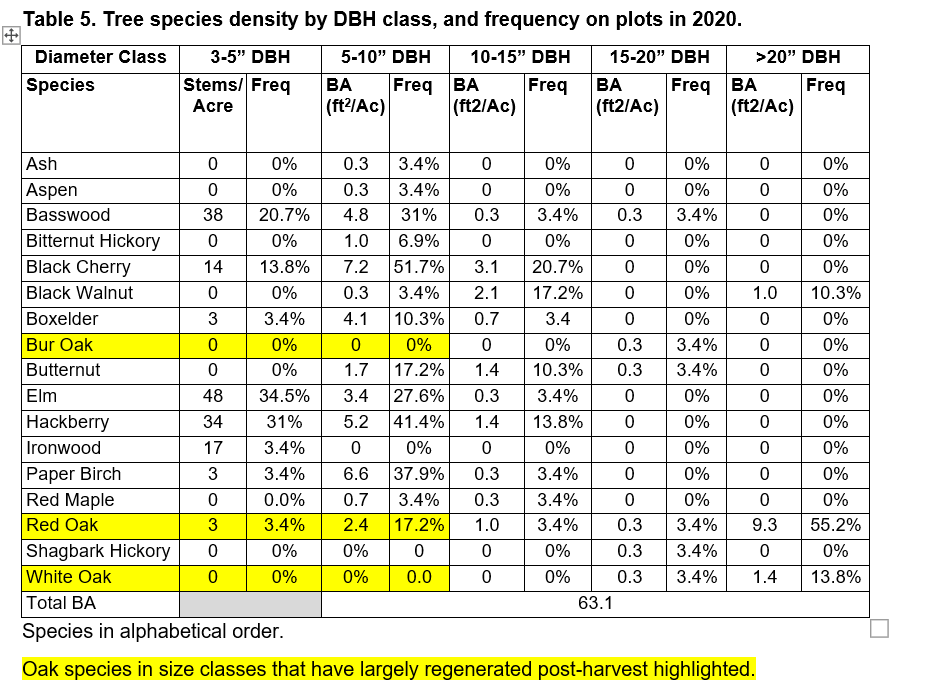
We did not get as much oak regeneration as we had hoped for
In 2020, there are some oaks that regenerated post-harvest, but not nearly as many as we would have liked. This is in spite of good numbers of seedlings for at least the first two years on the research plots (see Table 3).
Frequency data shows that less than 20% of the site contains oak regenerated post-harvest. Total stem counts in the 3-5 inch DBH class are well below minimum stocking standards (Sanders, 1977). Figures 2 and 3 (see links below) show that all oak species regeneration abundance is underrepresented.
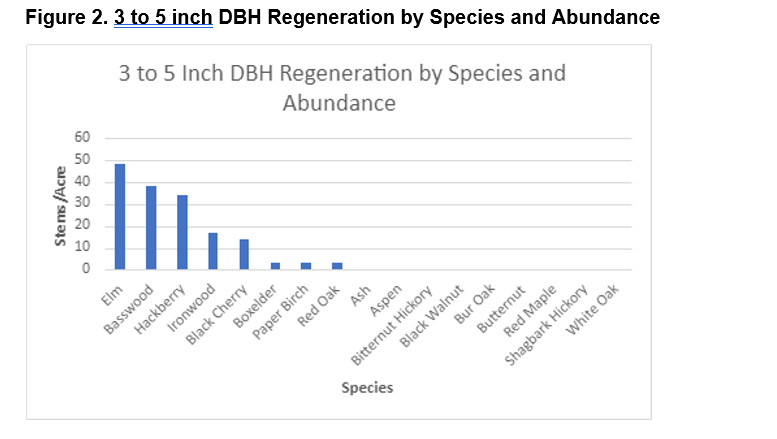
Figure 2: 3 to 5 inch DBH regeneration by species and abundance
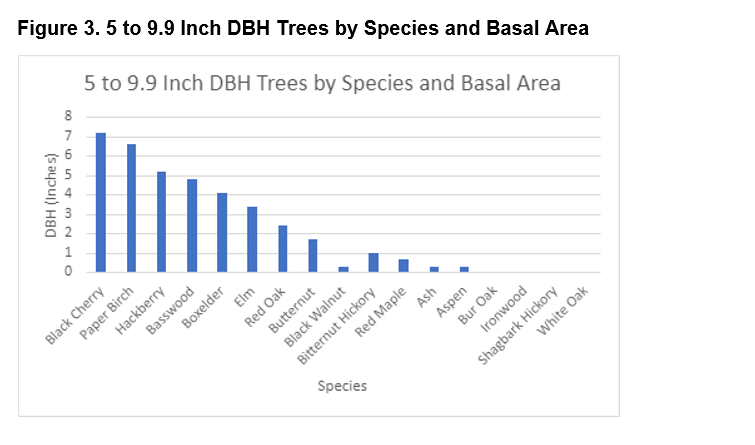
Figure 3: 5 to 9.9 inch DBH trees by species and basal area
Explanatory note on use of DBH data to distinguish harvest residuals from trees regenerated post-harvest: We gathered tree data by diameter class as a practical way to help identify which oak trees were those reserved from harvest in 1991, and which were regenerated after harvest. We estimate that:
• All trees from 3 to 5” DBH, and the majority of those from 5 to 10” DBH (Table 5) regenerated post-harvest.
• Virtually all trees over 10” DBH (Table 5) are harvest residuals.
While not a perfect way for making the harvest residual vs. post-harvest regeneration distinction (since the 5-10” DBH class is mixed), it is the most helpful and practical methodology we could think of and provides very useful information.
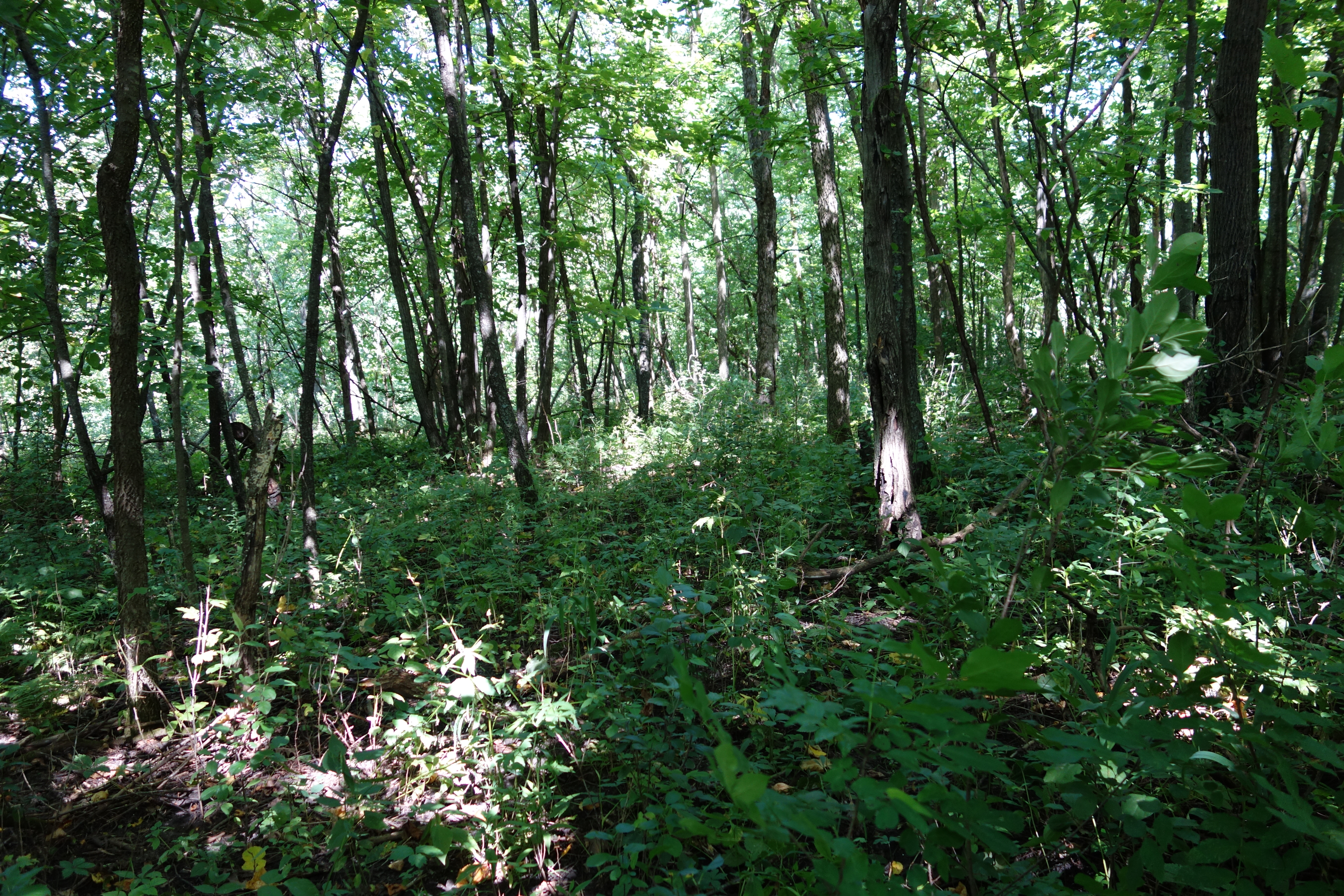
Figure 4: Mixed hardwoods stand in 2020.
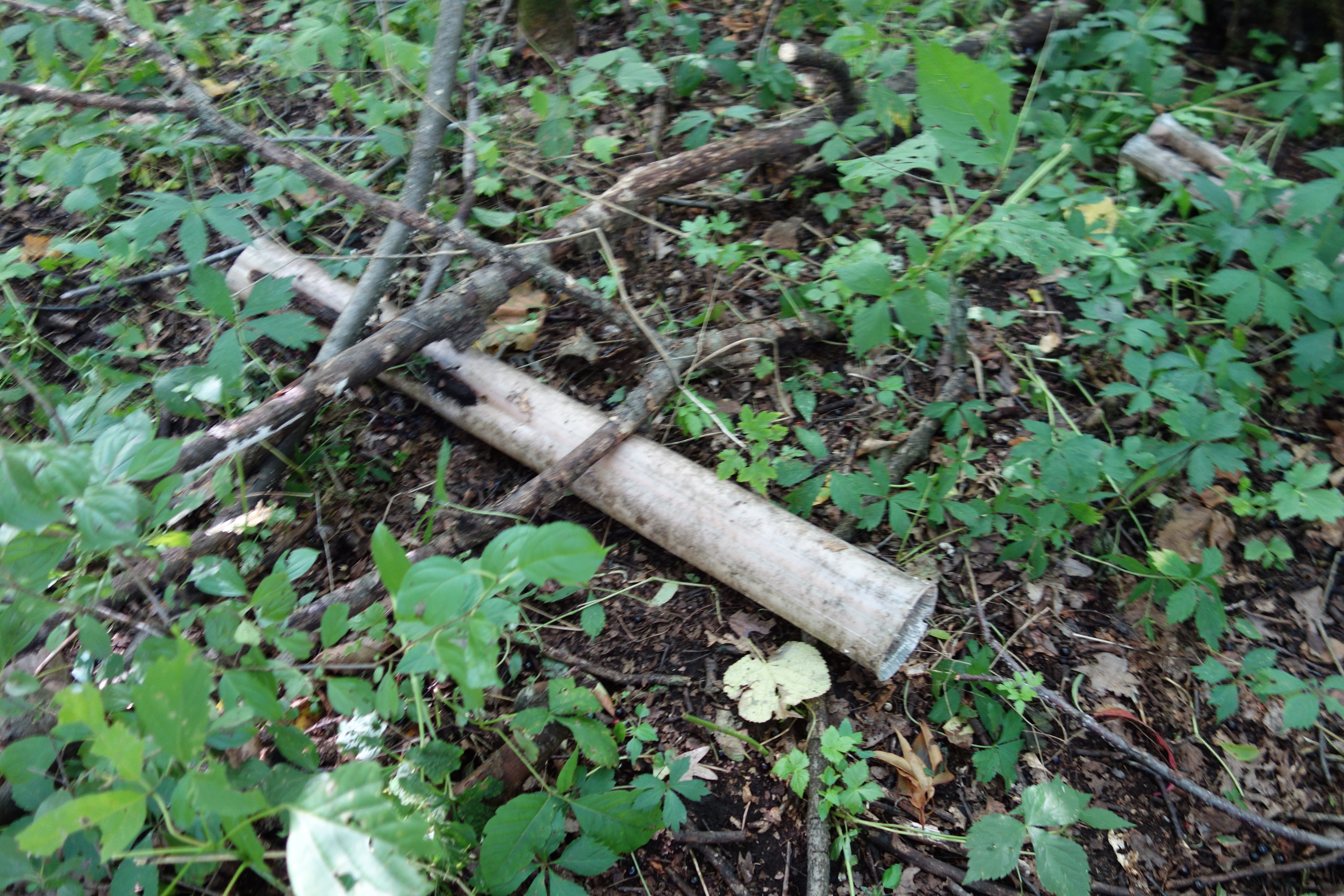
Figure 5: Discarded treeshelter that was used on a planted red oak seedling in 1992.
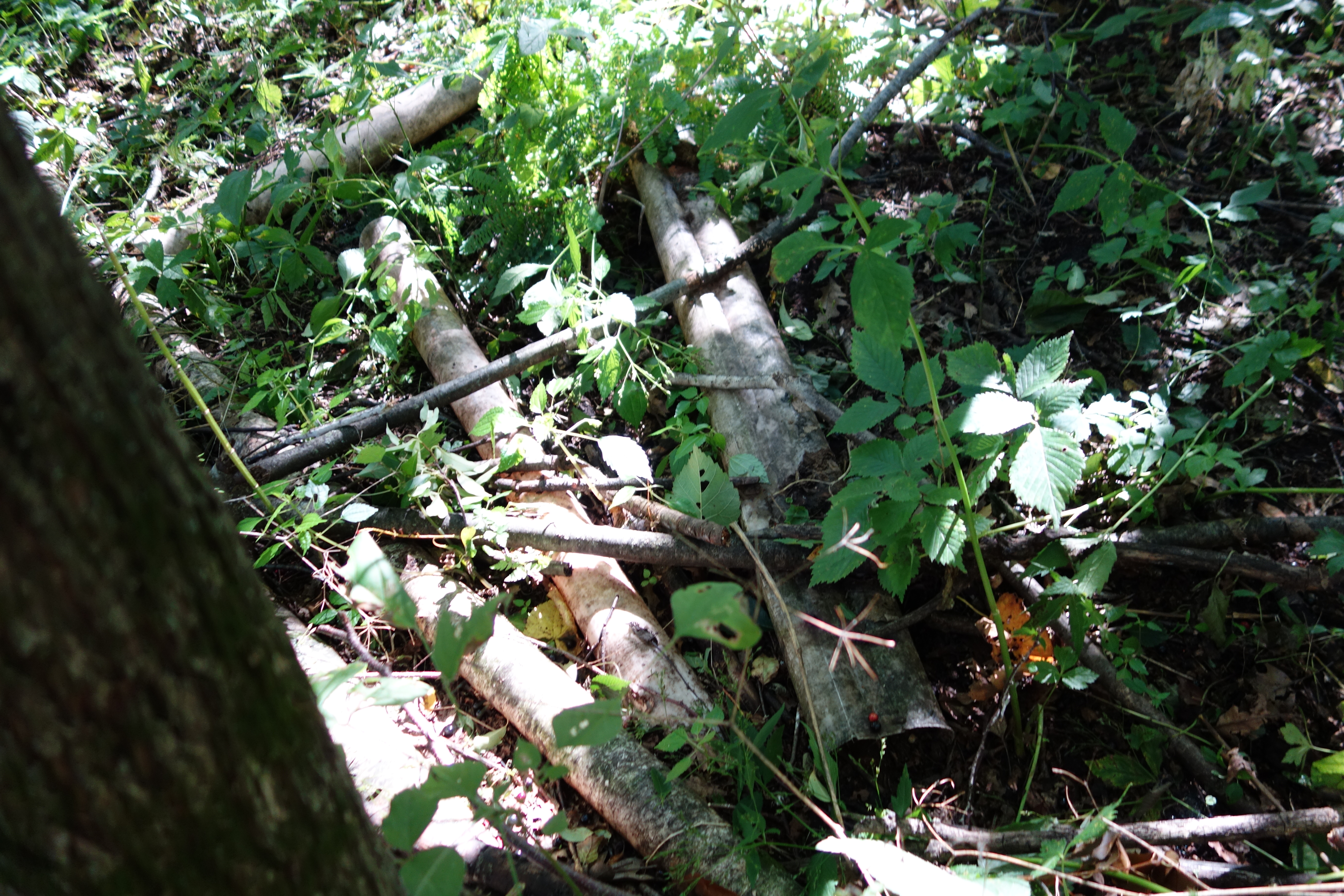
Figure 6: Discarded treeshelter quills that were used on planted red oak acorns in 1992.
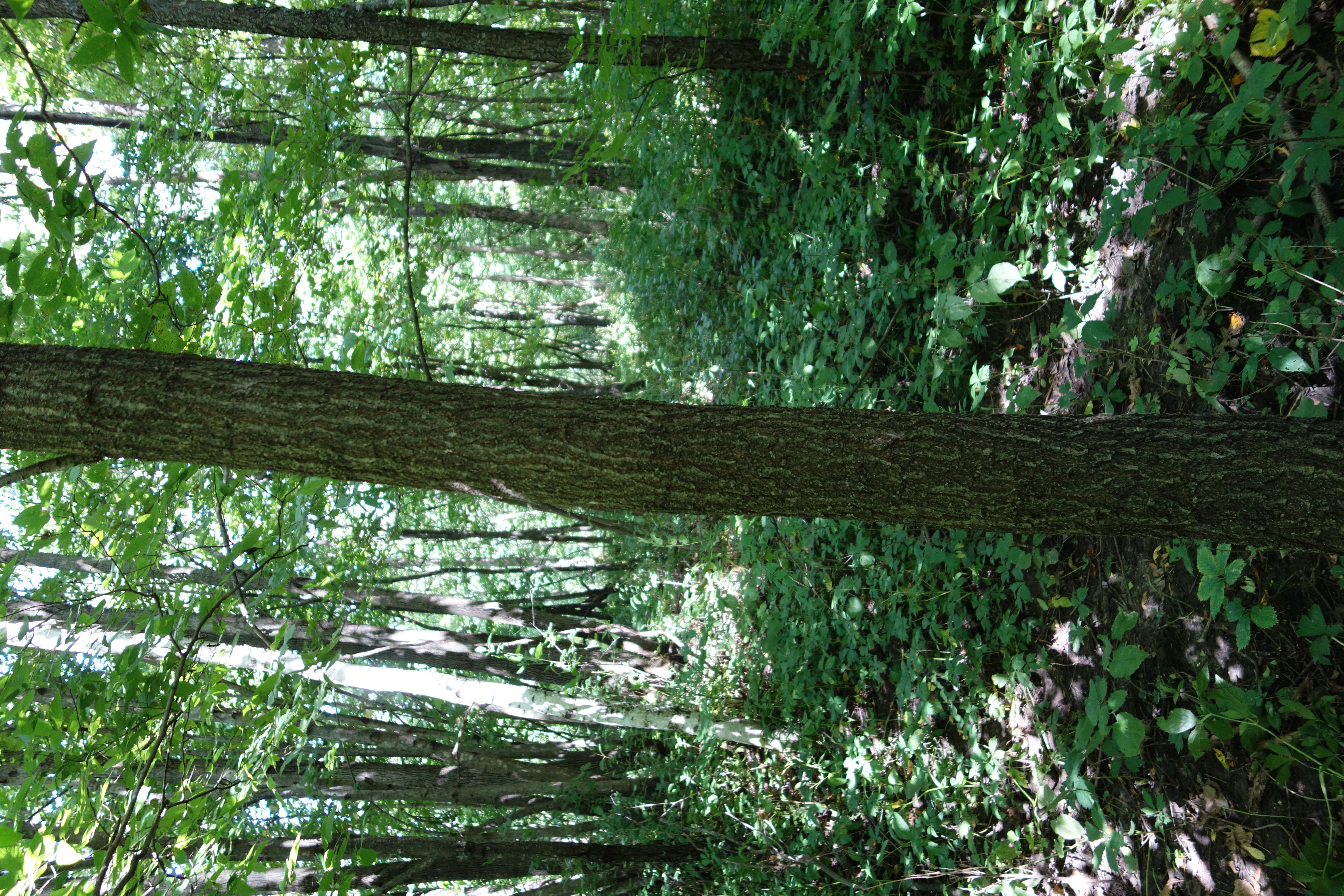
Figure 7: The stand has a few post-harvest regenerated red oaks but far fewer than hoped for
Intermediate stand treatments to release oak would have been necessary for more oak to survive!
We know from data taken the first 2 years after treatment that there was good initial establishment of red oak seedlings on the research plots. The relatively low oak component in 2020 indicates that either vegetative competition, animal predation or more likely a combination of these two factors killed oak seedlings before they became “free-to-grow”. It clear that additional crop tree release and protection work in years 2-10 post-harvest would have been necessary to increase oak survival.
There is a modest amount of healthy, well-formed mature oak from harvest residuals
Red oak comprises 19.6 square feet/acre of basal area for diameter size classes greater than 9.9-inches DBH. Red oaks in these size classes are all reserve trees left during harvest rather than natural or artificially regenerated seedings/saplings/small trees post-harvest. While modest in number, they are well distributed throughout the stand. They have excellent form, healthy crowns, and have exhibited outstanding growth over the last 29 years.
The stand has an excellent component of healthy, well-formed black cherry
One of the positive outcomes of the treatments is the presence and abundance of healthy, well-formed black cherry in the stand. Time will tell whether the black cherry on this site (and several others observed during case study field work) will reach maturity in a healthy and merchantable condition, but it looks very promising after 29 years. There is some black knot disease and stem cankering, but it appears to be present on less than 30 percent of the stems. Of note for forest managers, the Native Plant Community (NPC) guidance for Southern Dry-Mesic Oak Forest (MHs37) indicates that black cherry may need some intermediate release to reach heights much above 10 meters. Our crop tree release treatment in 2014 was timely and likely had a very beneficial impact on black cherry health and vigor.
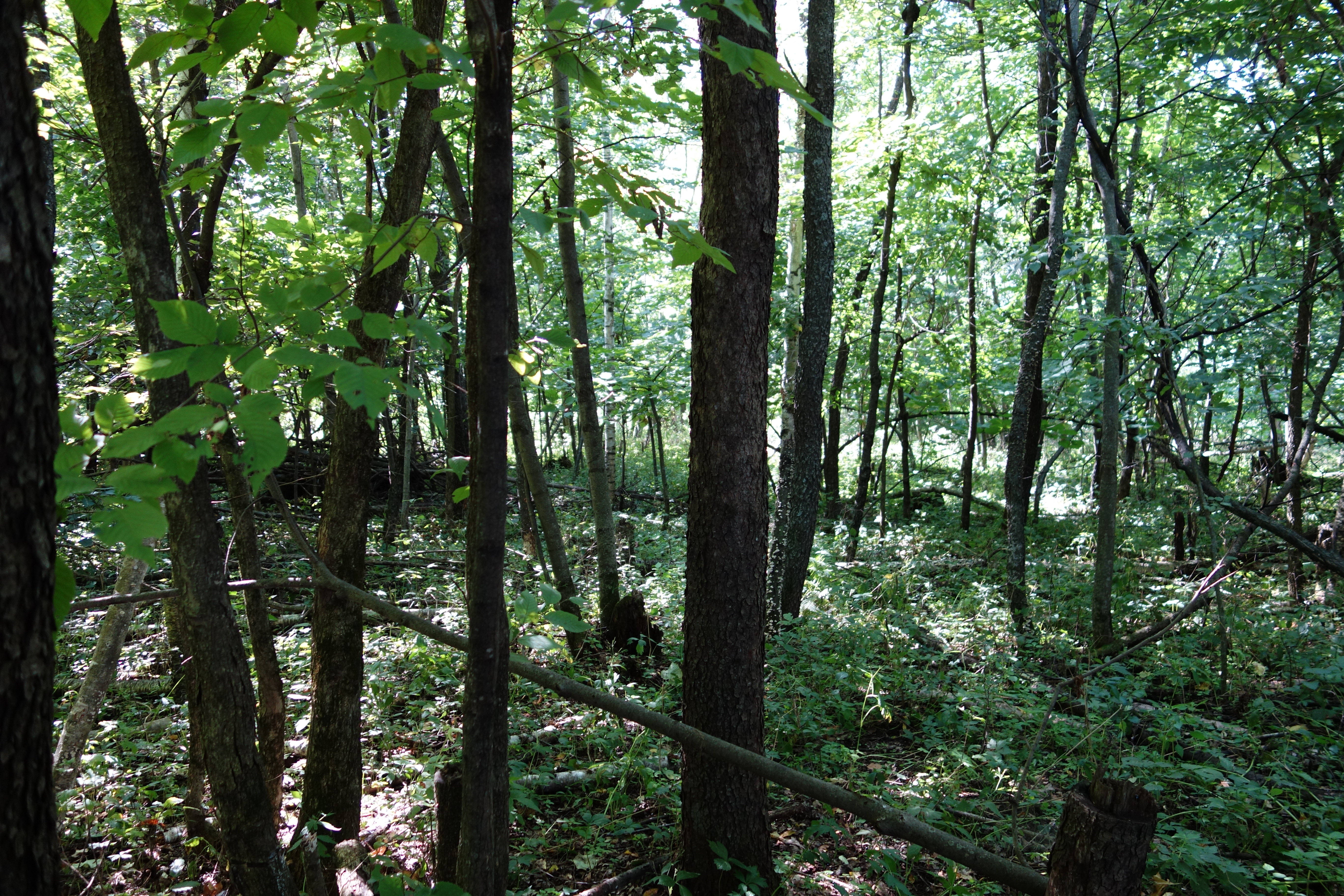
Figure 8: The stand has some excellent black cherry regeneration.
The stand has a notable component of butternut
There is a notable presence of butternut in part of the stand that established after the 1991 treatments. While there is individual tree mortality, and variable amounts of cankering, some of the live stems appear to be fairly healthy. It will be interesting to see if any butternuts survive over the next 20 years, or if they all die and are replaced by other species.
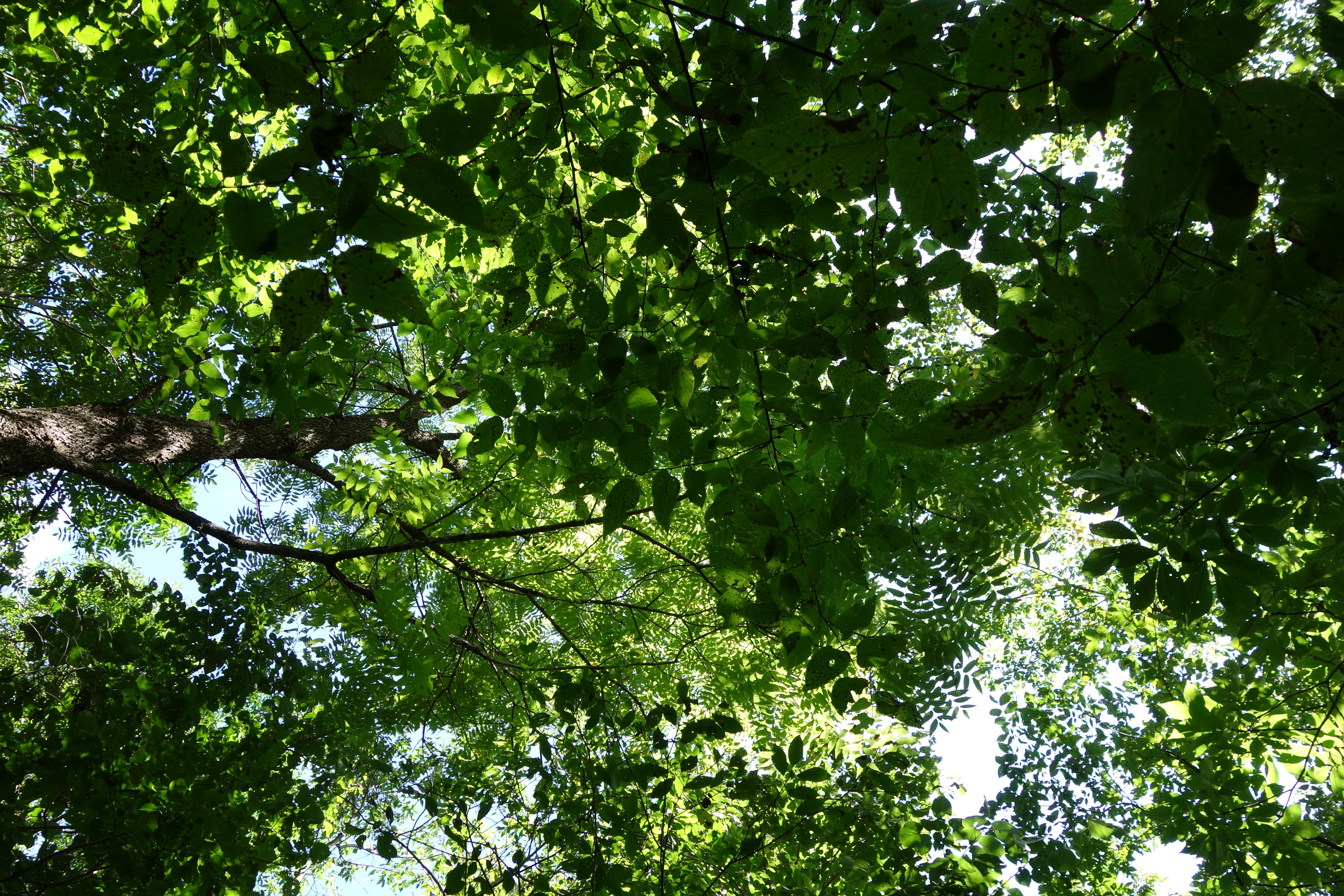
Figure 9: Looking up in a portion of the stand with a significant butternut component.
Over 30 percent of the competing elm and hickory stems girdled and chemically treated in the 2014 crop tree release survived
It is not clear from our observations why these stems survived, but we have seen the same phenomenon on several other case study sites. Follow-up discussions with Forestry staff will take place to determine if changes to crop tree release treatment specifications might be needed. These stems continue to compete with oak, cherry and other crop trees.
Understory regeneration
Because their impact on the future management of the stand is likely to be negligible, we did not collect understory regeneration data for sizes below 1” DBH. We did collect data for regeneration from 1 to 3” DBH and include it here because it may be of some interest to managers moving forward.
One notable takeaway from Table 6 (see link below) that may have the greatest impact on future stand management is the complete absence of sugar maple, and the low amount and distribution of ironwood. We conclude that future competition with crop trees will be negligible. While there is abundant hackberry and elm sapling regeneration, the impact on future crop tree management will be minimal due to crown position below the overstory crop trees, and intermediate shade tolerance.
Table 6: Stems/acre of 1 to 3 inch DBH regeneration by species and plot frequency in 2020.
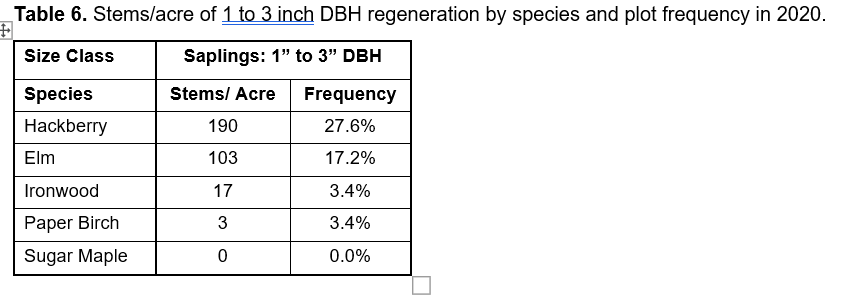
Understory plants
We did not take herbaceous plant sample plots in this case study. Our general observations during field visits confirms ground and shrub layer cover plants common to the Southern Dry-Mesic Oak Forest (MHs37) NPC.
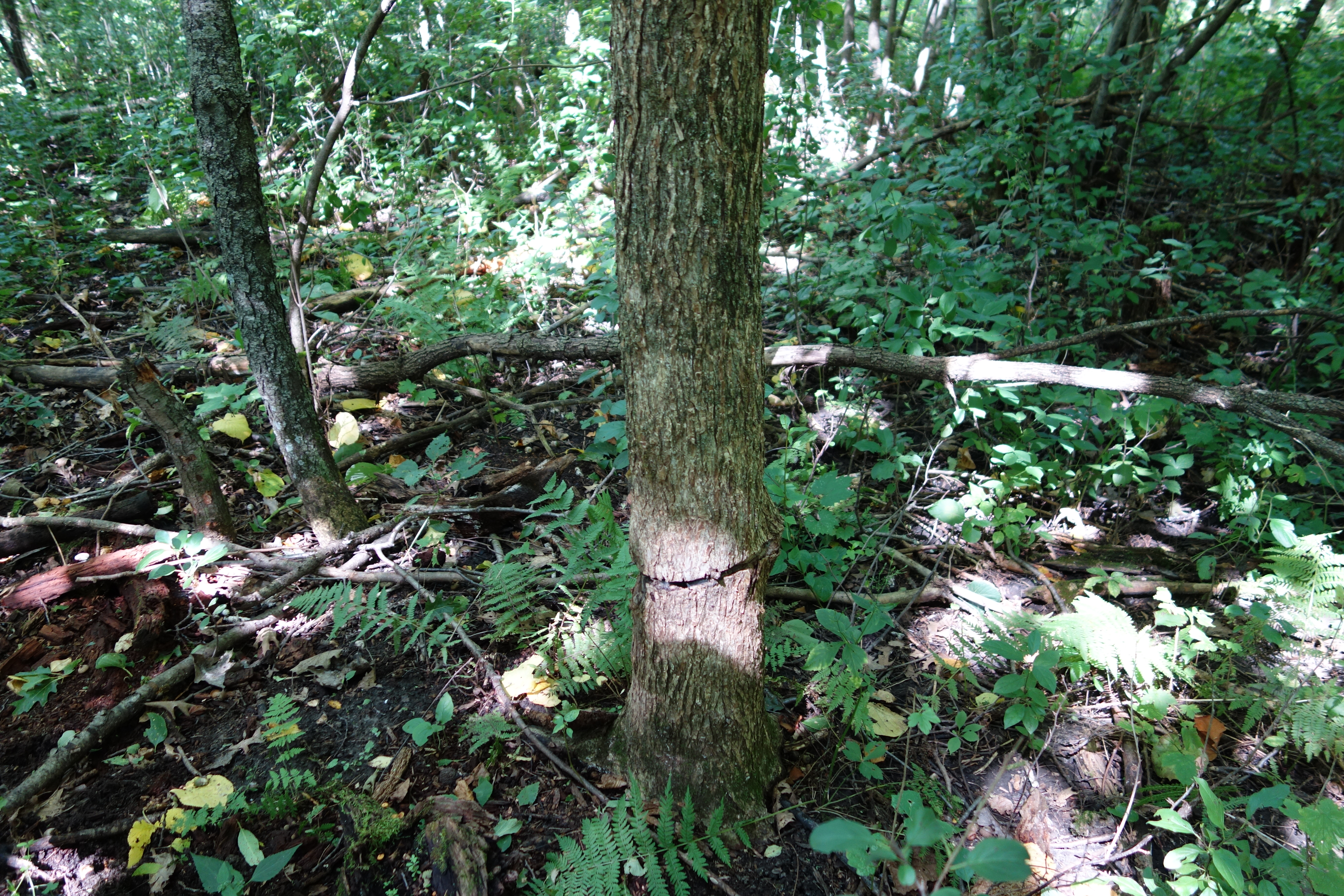
Figure 10: Some undesirable stems girdled and treated with herbicide in 2014 survived.
Invasive species
The only invasive species we found was buckthorn, which is present at low to medium densities over the entire site. Buckthorn is a plant to be aware of and consider when planning future stand treatments and regeneration.
Plans for future treatments
- Monitor the stand through periodic inventory surveys.
- Design and execute further crop tree release and buckthorn control efforts if needed.
Costs and economic considerations
Costs (estimated from personal knowledge of authors)
Pre-sale killing of undesirable stems < 6” DBH: $ 75/acre (1991 dollars)
Hand cut undesirable trees: $ 75/acre (1991 dollars)
Planting preparation: $ 50/acre (1991 dollars)
Chemical site preparation: $ 50/acre (1991 dollars)
Mechanical site preparation: $ 50/acre (1991 dollars)
Seedlings and acorns acquisition and planting: $100/acre (1991 dollars)
Treeshelters installed over some seedlings/acorns: $ 75/acre (1991 dollars)
Crop tree release: $125/acre (2014 dollars)
________
TOTAL $600/acre
Revenue
Timber revenue on 11 acres (1991): $600/acre (1991 dollars)
________
TOTAL: $600/acre (1991 dollars)
Other notes
The significant contributions of the University of Minnesota research project, and the resultant M.S. thesis by John Duplissis are gratefully acknowledged. “Artificial Regeneration of Northern Red Oak (Quercus rubra L.) in The Driftless Area of Southeastern Minnesota” was published in January of 1994. It is available at the College of Food, Agriculture and Natural Resources Science in Green Hall on the St. Paul Campus.
The data-gathering assistance of MNDNR Forester Kevin O’Brien and Forestry Intern Elizabeth Reeves is gratefully acknowledged.
The review and editing assistance provided by MNDNR Forestry Silviculture Program Consultant Paul Dubuque is gratefully acknowledged.
This case study was developed with support from the United States Department of Agriculture's National Institute for Food and Agriculture, Renewable Resources Extension Act. Project #2021-46401-35956, principal investigator Eli Sagor, University of Minnesota.
Summary / lessons learned / additional thoughts
We did not get as much oak regeneration as we had hoped for
In 2020, there are some oaks that regenerated post-harvest, but not nearly as many as we would have liked. This is in spite of good numbers of seedlings on research plots for at least the first two years after initial stand treatment.
Intermediate stand treatments to release oak would have been necessary for more oak to survive!
We know from data taken the first 2 years after treatment that there was good initial establishment of red oak seedlings on the research plots. The relatively low oak component in 2020 indicates that either vegetative competition, animal predation or more likely a combination of these two factors killed oak seedlings before they became “free-to-grow”. It is clear that additional crop tree release and protection work in years 2-10 post-harvest would have been necessary to increase oak survival.
The treatments have resulted in a diverse 29-year-old central hardwoods stand with significant oak, basswood, walnut, butternut and black cherry components in 2020
Red oak, black cherry, hackberry, paper birch, basswood and elm have the greatest basal area and frequency on plots of any species. A variety of other hardwood species are also scattered through the stand in smaller amounts, including black walnut, boxelder, butternut, white oak and several others. The oak component in the current stand is a combination of harvest residuals, and trees that regenerated post-harvest.
There is a modest component of healthy, well-formed oak harvest residuals
Most of the red oaks in the stand are from reserve trees left during harvest rather than those regenerated post-harvest. While modest in number, they are well distributed throughout the stand. They have excellent form, healthy crowns, and have exhibited outstanding growth over the last 29 years.
The stand has an excellent component of healthy, well-formed black cherry
One of the very positive outcomes of the treatments is that there is an excellent component of healthy, well-formed black cherry in the current stand.
The stand has a notable component of butternut
There is a strong component of butternut in part of the stand as of 2020 that became established after the 1991 treatments. It will be interesting to see if any butternuts survive over the next 20 years, or if they all die and are replaced in stand canopy by other species.
The 1991 research and documentation were valuable
We were unable in 2020 to re-establish locations of the different research treatments, so we can’t draw any new conclusions about differences in how the various treatments may have impacted oak survival after 29 years. However, we do know from the Duplissis thesis that after 2 years, there was good initial establishment of red oak on all plots, with no significant differences between treatments. This is extremely valuable information. When considered with the 2020 data that shows only a small, scattered component of oak that regenerated post-harvest, it clearly shows a need for more intermediate release and protection treatments in the first 10 to 15 years of stand establishment to meet oak regeneration objectives.
